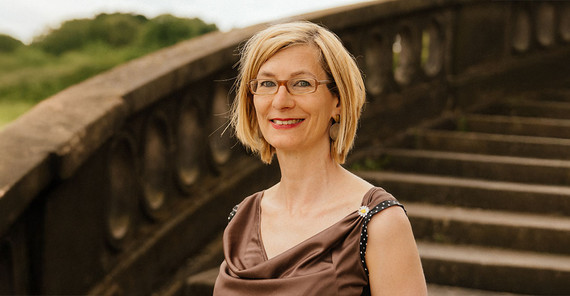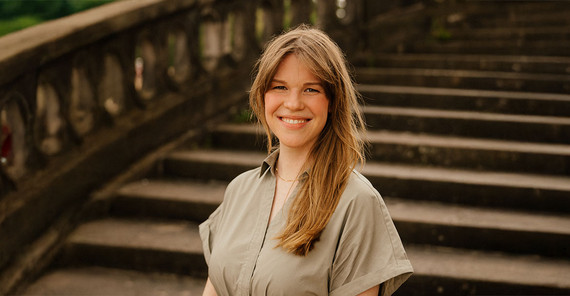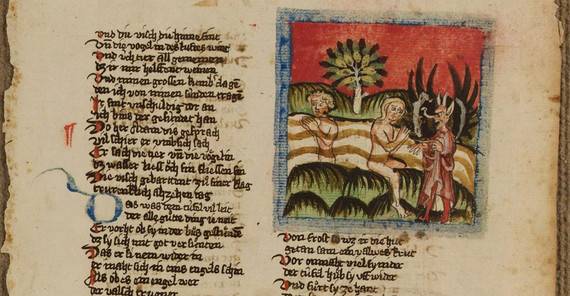Verse novellas … for novices
Every child knows fairy tales. But what about Mären? When Katharina Philipowski defines them, the difference between the two genres quickly becomes clear: “Märe is another term for Middle High German verse novellas, i.e., rhyming stories of about five pages. Just long enough that you can read them aloud comfortably in the evening before bedtime.” However, their content is not always suitable for a bedtime story, as they are about lying, betraying, and sometimes even about being buried alive. A conciliatory ending is also not guaranteed. “A verse novella can have a happy ending, but it can also have an open or very dark conclusion,” says the Professor of Medieval German Studies. Many people will still remember from their German lessons that the term “novella” comes from the Latin novus for “new.” A piece of news – in the sense of an event worth telling – also forms the core of every verse novella. “They revolve around a central event – a punchline, a crisis, or a spectacular event.” However, they differ in one essential way from the novellas that became increasingly popular from the 19th century onwards: they rhyme.
… for journeymen and journeywomen
Thematically, verse novellas cover a wide spectrum, from the everyday to the grotesque. For doctoral student Natalie Mlynarski-Jung, this is what makes this genre so appealing: “There are religious texts, texts about sexuality and gender roles, very violent texts, but also some that are hilarious. Some have downright slapstick humor.” Despite the variety of plots, moods, and characters, once you have read a few, you recognize verse novellas immediately: “Children understand what a fairy tale is because they know many fairy tales, and then they recognize repeating patterns. And it’s the same with verse novellas. Both are serial texts, so to speak,” Prof. Philipowski explains. The authors were quite experimental, Mlynarski-Jung says. “I imagine it like a construction kit. You have the typical characters, motifs, and plots that can be reassembled again and again. And sometimes something different than expected happens.” The Mären are also surprisingly topical in terms of content, Hans Levin adds. “The conflicts and strands we know from modern literature are already present in these medieval texts. You could actually say: It was all there before.”
… for masters
And who were the readers and listeners of these stories? The verse novellas were also a novelty in terms of their audience. Unlike older narrative forms—such as Arthurian romances, courtly novels, or heroic epics—verse novellas were not for the nobility alone. “Versified novellas had a very diverse audience. Nobles, but also burghers, rich craftsmen, and clergymen such as bishops and abbots owned manuscripts of tales,” Philipowski says. Usually, the tales were read aloud, and not only at court. “The rhymes made them sound particularly beautiful.” The texts were so widespread that even today, verse novellas are still being discovered that have not yet been translated into modern High German. This makes the tales an attractive subject for research. In addition, the stories are extremely complex, as Levin explains. “The more you know, the clearer it becomes that they are often connected and allude to each other.” Despite the often grotesque plots, there is usually a moral, and some of the texts are even philosophically or theologically profound – if they can be classified accordingly. And that’s where the podcast “Unerhörtes Mittelalter” helps, Mlynarski-Jung emphasizes. “We want to place the stories in their historical and literary context so that interested readers can perceive them as the multi-layered works they actually are.”
Listening tip
The Podcast “Unerhörtes Mittelalter” by the Potsdam literary scholars Prof. Dr. Katharina Philipowski, Natalie Mlynarski-Jung, and Hans Levin was awarded the first prize for the “Best Debut Audio” by the Stifterverband. The Fast Forward Science Award honors newcomers in the science community who convey current research in audio contributions in an exciting, understandable, and innovative way.
Listen in here: „Unerhörtes Mittelalter – Vormoderne Erzählungen und warum man sie unbedingt kennen sollte“
(in German)
This text was published in the university magazine Portal - Zwei 2025 „Demokratie“. (in German)
Here You can find all articles in English at a glance: https://www.uni-potsdam.de/en/explore-the-up/up-to-date/university-magazine/portal-two-2025-democracy




